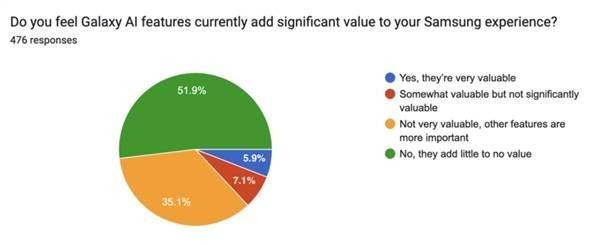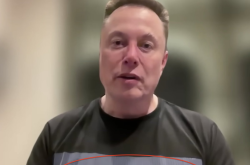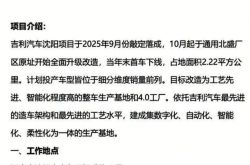Are AI Mobile Phones Taking a "Detour"?
![]() 03/27 2025
03/27 2025
![]() 581
581

Recently, Apple's upgraded Siri encountered another setback, leading to significant stock price fluctuations.
Initially, Apple planned to unveil new Siri functionalities at the Worldwide Developers Conference (WWDC) in June 2024, but insiders revealed to the media that these features will now be released as early as next year. According to Robby Walker, a senior director at Apple, the delay is due to quality issues. The company discovered that the success rate of the new technology is only 66% to 80%, meaning that approximately one error occurs every three interactions.
This is somewhat embarrassing for Apple, especially after it had already hyped up the new features. At last year's WWDC, Apple announced some key AI functionalities through a video demonstration, which are crucial for enhancing Siri's personal assistant capabilities.
In contrast, domestic mobile phone manufacturers seem to be progressing smoothly in implementing AI mobile phones. Not long ago, Huawei, Honor, OPPO, Xiaomi, and other manufacturers prominently integrated the DeepSeek R1 model, introducing new possibilities for their AI mobile phones. However, is this really the case? Can the high hopes placed on AI mobile phones by manufacturers translate into substantial returns?
Or, to return to a fundamental question: Is the AI mobile phone truly the future form of mobile phones?
Is the AI mobile phone still merely a concept created by mobile phone manufacturers?
2024 marked the inaugural year of AI mobile phones. At the beginning of the year, OPPO CEO Chen Mingyong stated that "the era of AI mobile phones will become the third stage of the mobile phone industry, following feature phones and smartphones," signifying the beginning of AI mobile phones entering the stage. Shortly after, various manufacturers rushed to launch new mobile phones, unanimously using AI functionalities as a selling point and labeling them as "AI mobile phones," attempting to tell consumers a new story about "AI mobile phones."
By the end of the year, OPPO, vivo, Honor, Xiaomi, Huawei, and others successively unveiled major AI features, with concepts such as AI agents and AI mobile phone operating systems (AI OS) taking center stage, frequently appearing on the PPTs of various manufacturers.
Despite mobile phone manufacturers' relentless promotion of AI mobile phones, consumers remain indifferent. According to a survey by SellCell, a renowned overseas second-hand trading platform, most users are not interested in these emerging AI functionalities on smartphones.

This survey covered 2,000 smartphone users aged 18 and above, half of whom were iPhone users and the other half Samsung smartphone users. They experienced Apple Intelligence and Galaxy AI, respectively. The survey results revealed that as high as 73% of Apple Intelligence users and 87% of Galaxy AI users believe that these new functionalities do not provide them with much value, and some even feel that they add almost no value at all.
The situation in China is similar. Lei Technology, a self-media outlet, interviewed friends and relatives to gauge their reactions as ordinary consumers to AI mobile phones. When asked if "AI would be a motivating factor for purchasing a mobile phone," almost all respondents said no, with only one respondent indicating that they would consider it but that it would hardly be a decisive factor.
This is actually the biggest issue with current AI mobile phones: most users do not perceive any difference in AI mobile phones, or even in AI mobile phones from different brands.
Why? Unlike AI applications such as Deepseek, ChatGPT, and Sora that rely on large models, although AI mobile phones can achieve some intelligent innovations in functionality through self-developed large models or access to third-party large models, these innovations are almost entirely changes made to the phone's original basic performance, such as camera imaging, battery life, heat dissipation, and communication. In a situation where performance is already excessive, subtle, localized, and immature changes simply cannot bring a profound perception to users.
For example, the "AI Eraser" function has a relatively high usage rate on mobile phones, but this function merely provides users with some convenience for photo editing after taking pictures. For most users, the presence or absence of this function is inconsequential.
Users' inability to perceive the changes brought about by AI mobile phones also determines that the public cannot form a successful cognition of the concept of AI mobile phones. Therefore, to a certain extent, AI mobile phones are still merely a concept created by mobile phone manufacturers to break the "stalemate" in the smartphone market.
For mobile phone manufacturers, it is most challenging to truly implement this concept on a specific mobile phone and make it a benchmark product for AI mobile phones.
Mobile phones do not need productivity changes
At last year's WWDC, Apple finally introduced its AI system, "Apple Intelligence." Apple emphasized this collaboration with OpenAI during the conference, and the AI suite includes functionalities such as smart assistants, email summaries, photo editing, and automatic translation. However, you may have noticed that these functionalities are already basic operations on domestically produced AI-focused mobile phones.
Currently available AI mobile phones on the market essentially cover AI functionalities such as real-time bidirectional translation, writing and communication assistance, AI imaging and photo editing, and intelligent voice assistants. Nevertheless, deploying these diverse AI functionalities on the latest flagship products and investing heavily in marketing have not won the favor of consumers.
On the one hand, the so-called AI functionalities are far from mature and do not meet the requirements of intelligence. On the other hand, AI functionalities such as document summarization, real-time translation, and article writing are indeed "high-end" at the technical level, but in practical mobile phone use, these functionalities are rarely used. Generally speaking, ordinary users neither have the habit of reading documents, writing reports, or writing articles on their mobile phones nor have many calls that require real-time translation or concise summaries.
According to SellCell's survey report, the writing tools and notification summary functionalities in Apple Intelligence have a higher usage rate, while other functionalities such as priority messages, photo cleanup, and smart replies have an average usage rate. Functionalities such as photo natural language search and transcription summaries are rarely attempted by users.
The low usage frequency reveals not only technical issues but also that the value of these AI functionalities tends to enhance productivity and provide tools for users, which feels somewhat "forced." Because whether it is a large model or an AI application born from a large model, they are first implemented in the office scenarios on the PC side and bring about productivity improvements. AI functionalities on the mobile phone side also focus on tools, which seems to mimic the PC side by directly adding a large number of office functionalities without considering the needs of mobile phone users.
Starting from user needs, should AI mobile phones develop towards "practicality"? Not really. Against the background of stagnant innovation in smartphones over the years, users need AI mobile phones to bring them a fresh experience or greater entertainment.
Last October, Zhao Ming, the former CEO of Honor, demonstrated at a press conference that with just one command, the mobile phone automatically ordered 2,000 cups of coffee. This functionality provided a demonstration for the development of AI mobile phones and awakened the public's imagination of AI mobile phones, where in the future, users can complete a series of operations such as beautifying photos, ordering takeout, hailing taxis, and shopping by simply chatting with the phone's intelligent assistant. This is also why mobile phone manufacturers are creating "AI personal assistants" or "AI agents."
But this clearly touches on the unsolvable "App Island" problem in the mobile internet era. To achieve system-level AI operations, mobile phone manufacturers need to cooperate deeply with major internet companies behind the apps, break through tripartite data and permissions, and thus form a huge AI ecosystem. However, the internet giants behind those super apps are unlikely to agree.
This may also be the biggest limitation facing the future evolution of AI assistants.
If one hardware is not enough, will the AI "suite" suffice?
Last year, mobile phone manufacturers collectively turned to the arena of AI mobile phones, and this year they have made nearly identical moves—building ecosystems.
Not long ago, Li Jian, CEO of Honor, made his debut at MWC 2025 and officially announced the Honor Alpha strategy. He announced that Honor will transform from a smartphone manufacturer to a globally leading AI terminal ecosystem company; Huawei is also promoting the full integration of AI large model technology into terminal systems, reconstructing the AI-centered HarmonyOS native intelligence; Lei Jun also stated that AI technology will be deeply integrated into Xiaomi's various terminal products, bringing consumers a more intelligent and convenient user experience.
In simpler terms, mobile phone manufacturers leveraging this AI technological progress for hardware upgrades will not stop at smartphones but will touch various terminal products. This is naturally not difficult for mobile phone manufacturers that have successfully built a relatively complete hardware ecosystem. However, since AI mobile phones have failed to make waves in the market, can an ecological approach bring about change?
It is worth mentioning that other AI-focused hardware has indeed shown positive sales momentum. For example, according to data from market analysis firm Canalys, shipments of AI PCs in the Chinese market grew steadily in 2024, reaching 5.8 million units, accounting for 15% of total PC shipments.
Another example is AI earphones. According to online monitoring data from RUNTO, sales of AI earphones and headsets in the traditional mainstream e-commerce market in China reached 315,000 units in 2024, with sales of 340 million yuan, representing increases of 260.9% and 405.9%, respectively, year-on-year compared to 2023.
However, these AI hardware actually face the same problem as AI mobile phones: the AI functionalities are not compelling enough to become a key factor influencing consumers' purchasing decisions. A salesperson at a computer store said, "Gamers or professional users who need design, rendering, and editing value the processor, memory, graphics card, battery, and other configurations of the computer more. Ordinary users will consider cost-effectiveness, and few consumers buy a computer for its AI functionalities."
Moreover, an awkward situation is that as AI applications continue to bring surprises, there have been blockbusters like Deepseek, which actually weaken the AI capabilities inherent in AI mobile phones or AI PCs. Users can download apps like Deepseek and Doubao on their mobile phones or PCs to experience the upgrades brought by AI technology without purchasing AI mobile phones or AI PCs.

In other words, the intelligence brought by these AI-focused hardware is currently highly replaceable. What's more, there is now an intelligent agent, Manus, that may directly disrupt smartphones.
This is no joke. In addition to Manus, Humane, a company invested in by Sam Altman, the founder of OpenAI, previously released a personal assistant device called AI Pin, which resembles a brooch and attaches to clothing with magnets. It is equipped with large models such as ChatGPT and allows for natural interaction through voice. Although this product failed, its emergence demonstrates that in an era where users' attention is monopolized by smartphones, there is a market for AI devices that allow for greater focus and less interference.
This should perhaps alert mobile phone manufacturers: Does the AI era bring opportunities or crises to smartphones?
Of course, in a unified ecosystem, large model technology also provides new imagination for the interconnection and multi-modal interaction between hardware, which may be a significant attraction for consumers. However, the coordination of software and hardware is a hurdle that manufacturers like Huawei, Xiaomi, and Honor, which are more adept at building hardware, must overcome.
From modular mobile phones, foldable screens, screenless mobile phones, to today's AI mobile phones, giants have never stopped exploring the future form of smartphones, which is also the fundamental path to emerge from the quagmire of lackluster product innovation. The imagination embedded in AI technology may be precisely what smartphones need, but whether it can truly bring transformative power to smartphones and drive them to successfully evolve to the next stage remains uncertain for now.
Dao Zongyouli, formerly known as Waidaodao, is a new media outlet focusing on the internet and technology industry. This is an original article, and any form of reprint without retaining the author's relevant information is not allowed.








